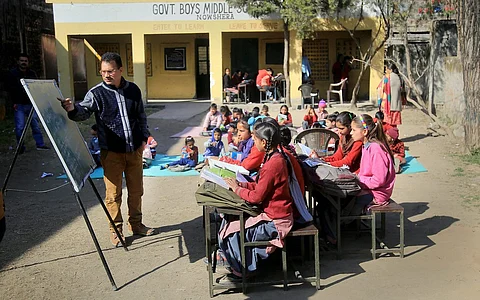

India has slipped to 131st place out of 148 countries in the World Economic Forum’s Global Gender Gap Index 2025 rankings, falling two places from last year’s 129th rank. While the report attributes the relative decline in rank to better performance by other countries, India’s overall gender parity score improved by 0.3 points compared to 2024.
The Global Gender Gap Index evaluates gender parity across four key dimensions: economic participation and opportunity, educational attainment, health and survival, and political empowerment.
India’s score in economic participation and opportunity rose by 0.9 percentage points to 40.7%. Despite this improvement, the country remains among the bottom five globally in this category, ranking 144th.
“The economies that are ranked in the bottom five of the Economic Participation and Opportunity subindex are: Sudan (31.3%), Pakistan (34.7%), Islamic Republic of Iran (34.9%), Egypt (40.6%) and India (40.7%),” the report noted.
In these countries, women continue to access less than one-third of the economic resources available to men. The report also said that these economies showed “minimal gender parity in senior workplace roles, with females-to-males ratios not exceeding 0.4, and labour-force participation rates reflecting less than half parity between women and men.”
Economic participation and opportunity is measured through indices such as labour force participation, wage equality, estimated earned income, etc. India’s score in labour-force participation rate remained the same (45.9%) as last year, which has been its highest level to date.
In educational attainment, India scored 97.1%, “reflecting positive shifts in female shares for literacy and tertiary education enrolment,” the report said.
India recorded improved parity in health and survival too, measured through sex ratio at birth and healthy life expectancy.
However, political empowerment remains a weak area for India. The country’s score in this category declined by 0.6 points compared to 2024. Women’s representation in parliament fell from 14.7% to 13.8%, and the proportion of women in ministerial positions declined from 6.5% to 5.6%.
The 18th Lok Sabha, elected in 2024, includes 74 women – 13.6% of all MPs – down from 14.4% in the 2019 elections.
India’s overall ranking was 135 in 2022. It improved to 127 in 2023, before falling again to 129 last year and 131 this year. India ranks fifth in southern Asia after Bangladesh, Bhutan, Nepal, and Sri Lanka, and is only followed by Maldives and Pakistan.
Globally, Iceland retained the top spot, followed by Finland, Norway, the United Kingdom, and New Zealand.
India’s overall gender parity score for 2025 stands at 64.4%, compared to the global average of 68.8% across all 148 countries assessed.
Among the 100 countries tracked consistently since 2006, the global gender gap narrowed slightly, improving from 68.6% in 2024 to 69% in 2025. However, at the current pace of progress, the World Economic Forum estimates it will take 123 years to achieve full gender parity worldwide.